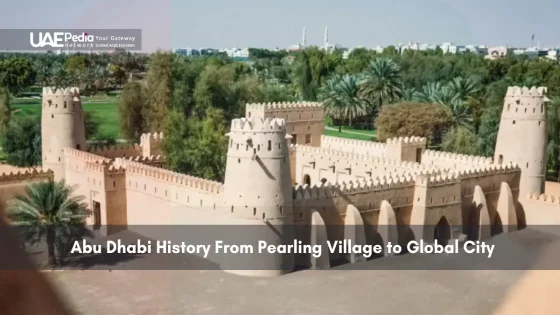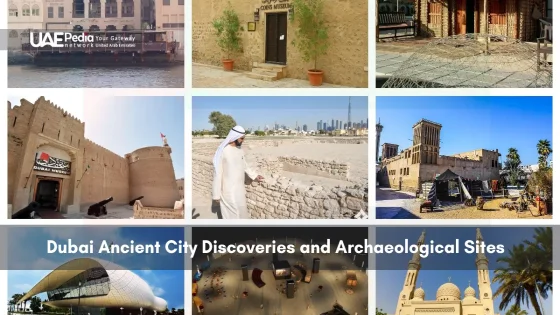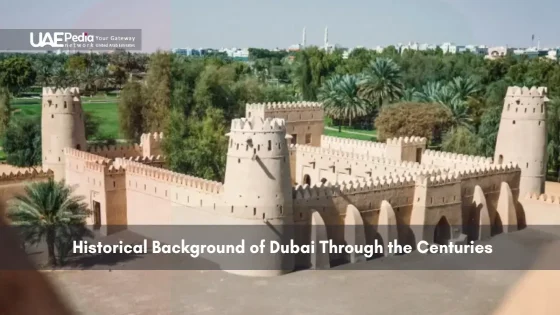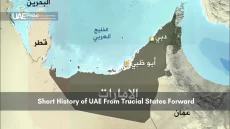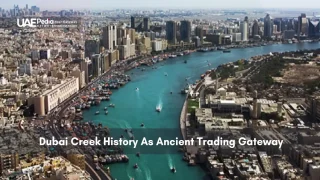Imagine standing on a centuries-old fortress, looking out at the Arabian landscape. The United Arab Emirates, known for its modern wonders, also has ancient forts and castles. These places tell stories of the past, showing the UAE’s rich history.
The UAE’s forts and castles, some dating back thousands of years, stand as enduring symbols of the nation’s rich heritage. Each emirate has its own special sites. Abu Dhabi, the biggest emirate, has amazing historical places like Qasr Al Hosn and Al Jahili Fort.
Al Fahidi Fort, constructed in 1787 and currently home to the Dubai Museum, offers insights into Dubai’s transformation from a modest fishing village to a modern metropolis.
We’ll explore the UAE’s fortress history, seeing how they helped defend the coast. We’ll also talk about how these forts have shaped the UAE’s identity. This journey will be both fun and educational, as we uncover the UAE’s secrets.
The Rich Heritage of UAE’s Defensive Architecture
The UAE’s defensive structures are silent witnesses to its rich history. These fortifications, found across the Arabian Peninsula, show the importance of forts in UAE history. Each structure shares a story of survival and growth.
Fortifications from the Pre-Islamic Era
UAE fort heritage goes back thousands of years. The ancient settlement at Umm Al Quwain dates back over 3,000 years, showcasing early defensive architecture. It shows early defensive methods. These structures kept people safe from invaders and harsh desert conditions.
Influence of the Islamic Golden Age on Fort Architecture
The Islamic Golden Age introduced new architectural styles. Forts and castles started using elegant Islamic designs while keeping their defense. Qasr Al Hosn, constructed in the late 18th century, exemplifies the fusion of Islamic design and defensive architecture.
Maritime Defense Structures and Coastal Fortifications
UAE coastal forts were key in protecting trade routes and fishing communities. Ras Al Khaimah’s fortifications, such as Dhayah Fort, played a crucial role in defending against maritime threats. These structures show the UAE’s coastline’s strategic importance through history.
| Era | Key Features | Examples |
|---|---|---|
| Pre-Islamic | Basic stone structures, defensive walls | Umm Al Quwain settlement |
| Islamic Golden Age | Islamic architectural influences, decorative elements | Qasr Al Hosn |
| Maritime Defense | Coastal watchtowers, strategic positioning | Ras Al Khaimah forts |
The UAE’s defensive structures show its role as a crossroads of civilizations. From pre-Islamic fortifications to Islamic-influenced castles and coastal defenses, these marvels amaze visitors and scholars.
Ras Al Khaimah’s coastal forts, including Dhayah Fort, were pivotal in defending against maritime invasions. Notably, in 1819, British forces captured Dhayah Fort after a siege, leading to the General Maritime Treaty of 1820. Ref.: “Dhayah Fort – Wikipedia.” [!]
“You Might Also Like: UAE Oasis Locations Throughout the Desert Emirates“
Chronological Evolution of UAE Forts and Castles
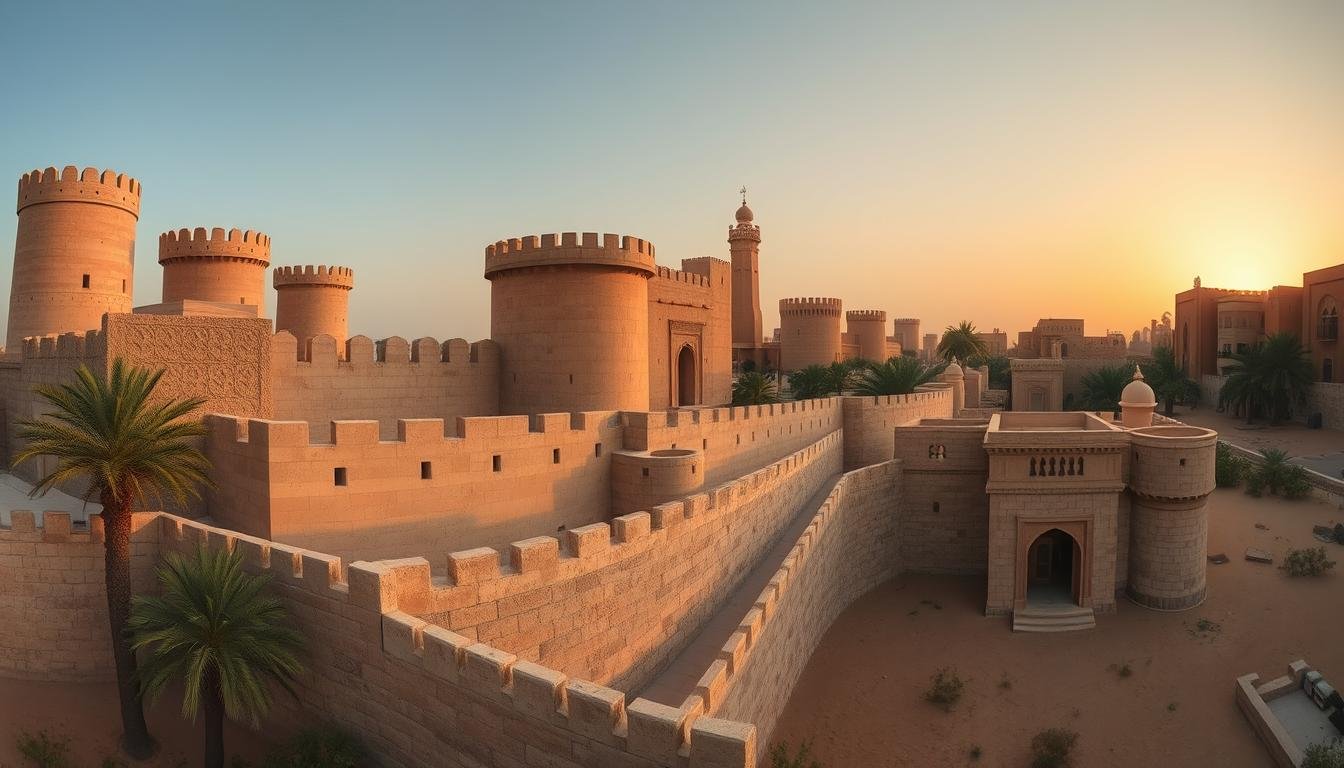
The UAE’s forts show a long history of architecture. They range from old mud-brick buildings to fancy stone walls. These places tell us about the UAE’s past and its Gulf Country roots.
At first, forts were simple for protection. Later, they got more complex and pretty. This change shows how the area’s politics and culture shifted over time.
- Pre-Islamic fortifications (7000 years ago)
- Early Islamic period castles (8th-13th centuries)
- Portuguese occupation era structures (16th century)
- 19th-century fortresses
Fujairah Fort, dating back to the 16th century, and Qasr Al Hosn, from the 19th century in Abu Dhabi are famous. They show how clever the people of the area were in building things.
| Period | Key Features | Notable Examples |
|---|---|---|
| Pre-Islamic | Simple mud-brick structures | Al Ain Oasis fortifications |
| Early Islamic | Stone walls, watchtowers | Dhayah Fort, Ras Al Khaimah |
| Portuguese Era | Coastal defenses, cannons | Fujairah Fort |
| 19th Century | Larger compounds, decorative elements | Qasr Al Hosn, Abu Dhabi |
Now, many UAE forts are museums and cultural spots. They keep the nation’s history alive for people to learn and enjoy.
Prominent Fortresses in the Abu Dhabi Emirate
Abu Dhabi Emirate has many historical forts. These forts show the UAE’s rich fort heritage. They give visitors a peek into the emirate’s past.
Al Maqta Fort: The Guardian of Abu Dhabi
Al Maqta Fort, strategically located at Abu Dhabi’s only land entrance, served as a vital defense point in the 18th century. It guarded the city’s only land route in the 18th century. Now, it reminds us of Abu Dhabi’s strategic role in the Persian Gulf.
Al Ain Palace Museum and Fortifications
The Al Ain Palace Museum, formerly the residence of Sheikh Zayed bin Sultan Al Nahyan, offers insights into royal life and Emirati heritage. It now tells the story of royal life and UAE fort heritage. The palace’s defenses show the value of fortifications in Emirati culture.
Historic Military Structures in Al Dhafra
Al Dhafra is home to many important forts. Qasr Al Hosn, Abu Dhabi’s oldest stone structure built in the late 18th century, has been restored and now functions as a museum and cultural center. Dhafeer Fort, from the 19th century, also played a big role in protecting the area.
| Fort Name | Location | Year Built | Current Use |
|---|---|---|---|
| Al Maqta Fort | Abu Dhabi City | 18th century | Historical site |
| Al Ain Palace | Al Ain | 20th century | Museum |
| Qasr Al Hosn | Abu Dhabi City | 18th century | Museum |
| Dhafeer Fort | Al Dhafra | 19th century | Historical site |
Historical Fortifications in Dubai
Dubai’s skyline is full of modern wonders. But its past is just as interesting. The UAE Forts and Castles across Dubai show its rich history. These castles prove Dubai’s strategic value and cultural heritage.
Al Fahidi Fort: Home of Dubai Museum
Al Fahidi Fort, constructed in 1787, stands as Dubai’s oldest existing building. It’s the oldest building in Dubai. Today, it’s the Dubai Museum, visited by over 2,000 people every day.
This fortress tells the story of Dubai’s growth. It shows how Dubai changed from a fishing village to a world city. Visitors learn about life before oil.
Hatta Heritage Village Fortifications
The Hatta Heritage Village, meticulously restored to reflect traditional mountain life, showcases historical architecture and cultural practices, opened to the public in 2001 after extensive restoration efforts by Dubai Municipality.
The restored fort shows how people built homes long ago. They used coral stone and palm wood.
“Discover More: Discovering the UAE’s Archaeological Treasures“
Ancient Watchtowers of Dubai
Dubai’s watchtowers, such as Burj Nahar, were essential for monitoring potential threats and safeguarding the city. Burj Nahar, a watchtower garden, is a big hit with visitors. These towers show how early settlers protected their homes.
| Structure | Year Built | Current Use | Daily Visitors |
|---|---|---|---|
| Al Fahidi Fort | 1787 | Dubai Museum | 2,000+ |
| Hatta Heritage Village | 3000+ years old | Tourist Attraction | Varies |
| Burj Nahar | 19th century | Historical Garden | Hundreds |
These old structures contrast with Dubai’s modern skyline. They are big draws for those wanting to see Dubai’s old days. Thanks to preservation, these sites keep telling Dubai’s story.
“Further Reading: Dubai Museum Al Fahidi Fort Tour“
Castle Heritage of the Northern Emirates
The Northern Emirates have many UAE forts and castles. Each one has its own story. These structures have shaped the region’s history and culture.
Historically known as Julfar, Ras Al Khaimah was a significant port and trade center in the region. It has the UAE’s only hilltop fort, Dhayah Fort. This fort shows 18th-century defense strategies and offers great views.
Fujairah Fort, among the oldest in the UAE, exemplifies the emirate’s historical resilience. It shows the emirate’s strength. Al Bidya Mosque in Fujairah, notable for its four domes, is part of the UAE’s rich cultural heritage.
Umm Al Quwain’s old town has historic buildings, like a restored fort turned museum. This change shows how these buildings have evolved in modern UAE society.
The castles and forts in the Northern Emirates did more than just defend. They were also centers of local government. Now, they are key to the region’s cultural tourism, letting visitors see the UAE’s architectural and defensive history.
Conservation and Restoration Initiatives for UAE Forts
UAE fort restoration is key to keeping the country’s history alive. Many efforts are underway to save these historical castles. Both the government and private groups are working hard to protect these sites.
Al Jahili Fort underwent comprehensive restoration from 2007 to 2008, utilizing traditional materials like sun-dried mud bricks and palm logs to preserve its historical architecture, utilizing traditional materials like sun-dried mud bricks and palm logs, ensuring the preservation of its historical architecture. Ref.: “Al Jahili Fort | Experience Abu Dhabi – Visit Al Ain.” [!]
UNESCO Heritage Site Initiatives
The Cultural Sites of Al Ain, including Al Jahili Fort, have been recognized as UNESCO World Heritage Sites since 2011. This recognition shows their importance worldwide. The Al Jahili Fort, constructed in the 1890s using sun-dried mud bricks and palm logs, underwent significant restoration between 2007 and 2008, preserving its historical architecture.
Modern Conservation Techniques
UAE uses old and new methods to save forts. Teams use new tech to keep forts stable while keeping their history. For example, the Al Jahili Fort was restored to keep its unique look and last long.
“Related Topics: Abu Dhabi Qasr Al Hosn Historical Experience“
Enhancing Cultural Tourism through Fort Preservation
Visiting UAE historical forts is becoming more popular. Many forts are now museums and cultural spots. Al Jahili Fort, for example, has events and tours all year.
Visitors often spend 1 to 2 hours exploring Al Jahili Fort, with the cooler months from October to March being the most favorable for visits, with the cooler months from October to March being the most favorable for visits.
Visitors typically spend 1–2 hours exploring Al Jahili Fort, with the cooler months from October to March being the most favorable for visits, aligning with peak tourist seasons in the UAE. Ref.: “Explore Al Jahili Fort: History, Ticket Price & More.” [!]
These efforts in the Middle East protect both buildings and cultural traditions. By making historical sites tourist spots, the UAE lets future generations learn from its history.
“Related Articles:
Exploring the UAE’s historical forts and castles is a journey through time. These amazing buildings are found across the seven emirates. They show the UAE’s rich history.
Fujairah Fort, dating back to the 16th century, and the ancient Dibba Archaeological Site are just a few examples. Each place has its own story of importance and culture in West Asia.
The UAE has kept its heritage alive while moving forward. Places like Abu Dhabi and Dubai show off their history and modern looks. Al Fahidi Fort in Dubai is a great example.
While the transformation of forts into museums enhances cultural tourism, it also necessitates balancing modern accessibility with the preservation of historical authenticity, often requiring compromises in restoration methods. Ref.: “Al Jahili Fort – Department of Culture and Tourism Abu Dhabi.” [!]
Al Hayl Castle in Fujairah offers insights into the emirate’s ruling family’s history and architectural heritage. These sites draw in history lovers and are also used for movies. This makes the UAE a growing place for film shoots.
Looking back at our journey, these forts and castles are more than old buildings. They are museums that teach us about the UAE’s past and future. From Al Bithnah Fort’s military genius to Fujairah’s luxury hotels, these sites offer a special experience. They connect old history with today’s charm.

